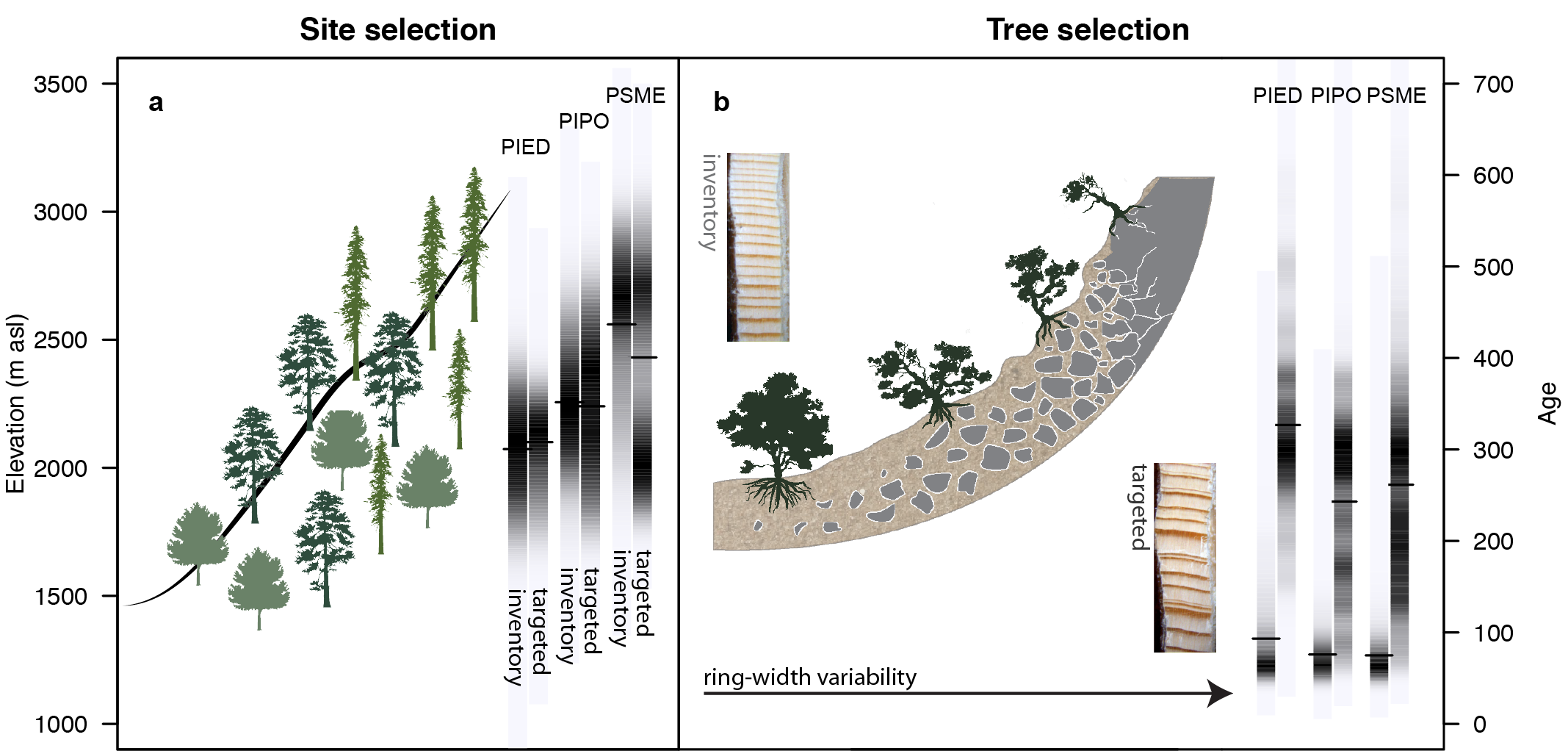Refining our view of how forests will decline under climate change
figure1_apr27-01.png

A team largely based at the University of Arizona Tree-Ring Lab has used huge sets of additional tree-ring data to refine earlier predictions of how climate change will cause forests to decline in the southwestern U.S.
Previous studies had painted a grim picture for the future of the present pattern of forest vegetation across the American West. But these studies were based on the single best-known archive of tree-ring data, the International Tree-Ring Data Bank, contributed by many researchers, most of whom were following the standard accepted practices for selecting which trees to sample. These make sense when trying to reconstruct climate from tree rings: rather than selecting trees at random, researchers will pick sites that are near the edge of tree species' geographical distribution, then select the trees growing in specific locations where they are sensitive to the climatic variables of interest (for example, drought-sensitive trees growing on well-drained slopes); they will pick old trees, because these will be needed to construct long tree-ring chronologies. This targeted sampling is at odds with the ecological sampling designs commonly used to investigate patterns of vegetation on the landscape, but is a matter of practical necessity: random sampling designs producing comparable climatic reconstructions would require vastly greater resources to complete.
However some projects have already expended the vast resources required. In particular the USDA Forest Service has collected core samples and supporting observations from a network of plots intended to sample all the forested lands of the U.S.; their Interior West-Forest Inventory and Analysis (FIA) dataset includes 4655 trees. Two additional projects with ecologically respectable sampling designs and many hundreds of samples were also available. Some (non-trivial!) additional work made the forest inventory samples suitable for climatic reconstruction, then the current study could compare the reconstructions and predictions of previous studies with those from a more representative sampling design.
The main prediction, that forests will decline under projected climate change, still applies. However the perspective of more representative sampling across the entire landscape shows that the sites contributing to the International Tree-Ring Data Bank will fare worse than most. This makes intuitive sense: for example if a sensitive tree already shows episodes of reduced growth during droughts, it will show permanently reduced growth (or die altogether) if drought becomes the new climatic norm. Forests as a whole may decline less than previously predicted, but this is small compensation for trees already close to the edge of survival.

